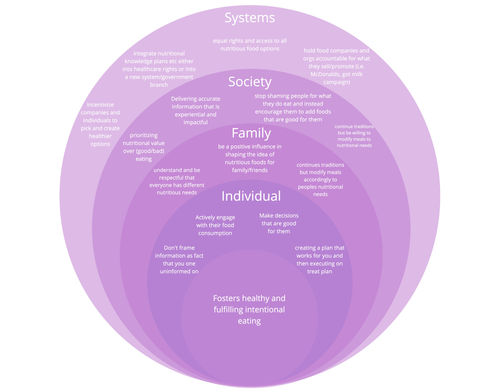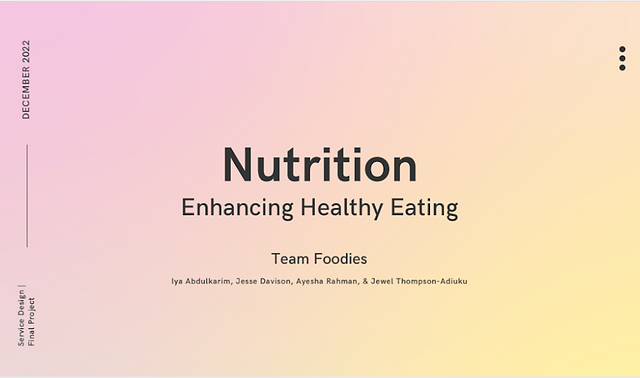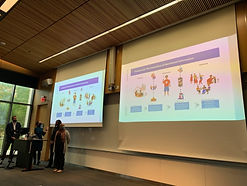
EatWell
Final prototype user flow of Eatwell
PROBLEM
How might we foster healthy and fulfilling intentional eating?
Currently, people lack filters to process nutritional information for themselves. People’s perceptions of what foods are nutritious are constantly changing based on the information that is being presented to them at different stages in their lives.
SOLUTION
Eatwell is a Digital AR service hosted within the existing nutrition feature on mobile phones + phone apps. This service was created to provide shoppers with curated nutritional information in the grocery store to encourage healthy and intentional eating.

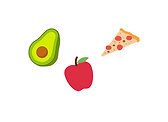
Over 16 weeks, we understood why & how people chose food in the store and how people understood what impact their food choices have on their nutrition.
"Nutrition is a critical part of health and development" - World Health Organization
Today, the topic of nutrition is well discussed due to the increasing rate of obesity, malnutrition, and food related chronic diseases in North America. People’s perception of what foods are nutritious are constantly changing based on the information that is being presented to them at different stages in their lives. The government issued food plates and pyramids have undergone various adaptations over the year but these changes haven't drastically altered people's food purchasing and eating behaviour.
Part fieldwork in design, part service design, our goal was to understand how people receive nutritional information and how they make decisions about what foods to buy.
My Role:
User Researcher & Service Designer (Sept - Dec 2022)
I contributed to this project in the following ways:
-
Led the research phase, including lead interviewer, and intercept data collection.
-
Created assets for the participatory design activities, and service prototyping exercises.
-
Collaborated with the team in planning for and facilitating co-design activities and community engagement.
-
Planned and directed the production of the research framework and final service prototype.
Design Principles

🧍🏽♂️Individuality
Recognize, uplift, and honor the different contexts of individuals to foster personalization.
🤝Decision-Making
Honor the autonomy of users by providing tools to understand and filter information to make decisions for themselves.
✏️Iterative
Learning Process
Create a learning process with continuous engagement through leveraging all forms of teaching (formal & informal).
🥝Food For All
People have a right to access not just food, but to all nutritional options
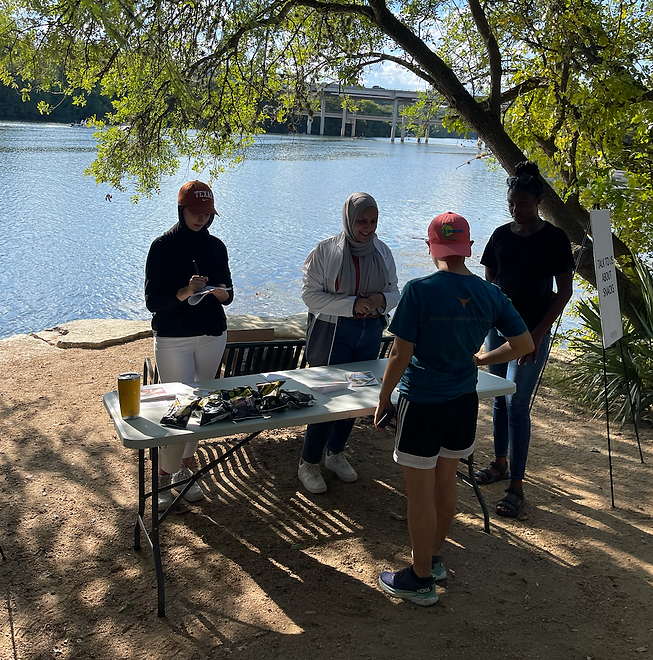
Picture taken by the team during card sorting activity at TownLake
The Approach
In two months, we conducted 5 semi-structured interviews and 15 participatory design activities.
1. In - Home Contextual Interview
-
The study involved a pre-interview task where participants documented their fridge, shopping, and grocery store purchases, which informed the in-depth in-home interview.
-
Why this method?
-
Gain a deeper understanding of the connection between the participants' understanding of nutrition and its incorporation into their daily life, through observing their kitchen and its contents.
-

2. Food Diary
-
We asked participants to take pictures of their grocery cart after shopping, interior of their fridge and pantry, and their grocery list (if available) and submit their responses to the research team. These entries were touched on during the in-home contextual interviews.
-
Why this method?
-
We got to see what foods they purchased and whether they were actually being consumed.
-
3. Intercepts with Card Sorting Activity
-
The activity at Town Lake involved intercepting people on a trail and presenting them with a card sort task of ranking snacks based on likelihood of purchase or consumption. Followed up with short survey to understand the choices they made.
-
Why this method?
-
Activity showed how people understood foods to be nutritious and the factors that influenced that understanding.
-

Tools used at this phase:
-
Card Sorting
-
Audio recorders
-
Miro
-
Canva
-
Written note-taking


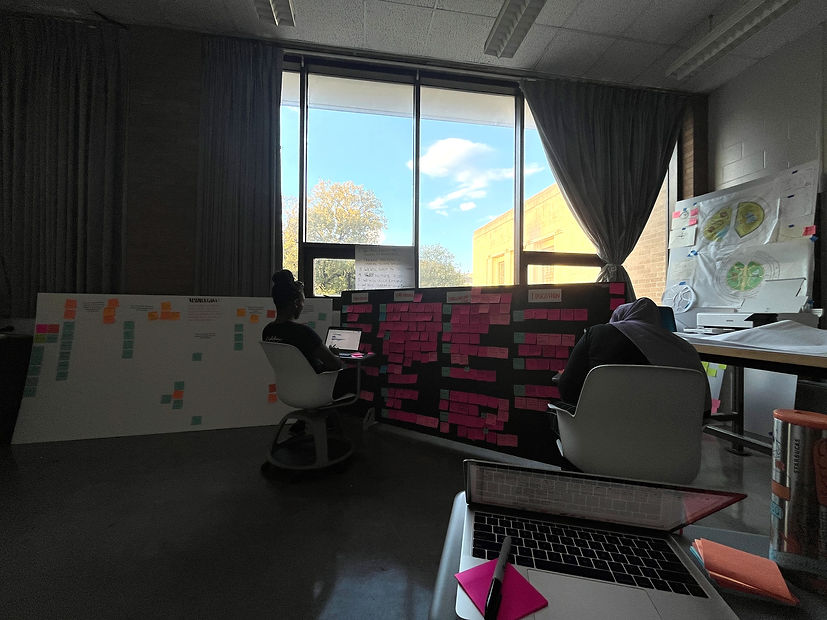
Pictures taken by the team during data synthesis session.
Data Synthesis
As we gathered data, we began the process of sense-making to synthesize the information we collected.
-
We started to see common patterns in our data through thematic analysis and affinity diagramming, which led us to identify themes.
-
From the data gathered in our interviews with community members, we developed journey maps to better understand the community's needs.
-
We also used a mind map and a framework to visualize interactions and uncover insights.
Our final deliverable included a field guide, insights report, generation of nutritional information framework visualization, opportunity areas.
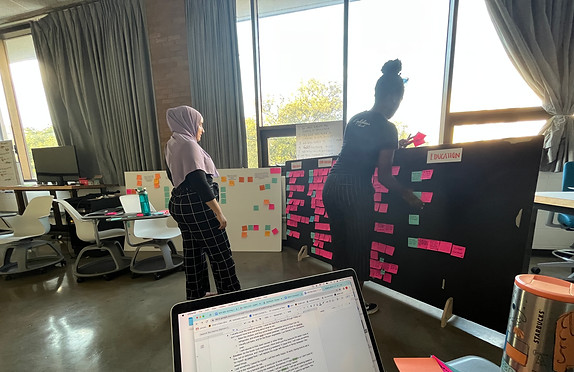

Themes that Emerged




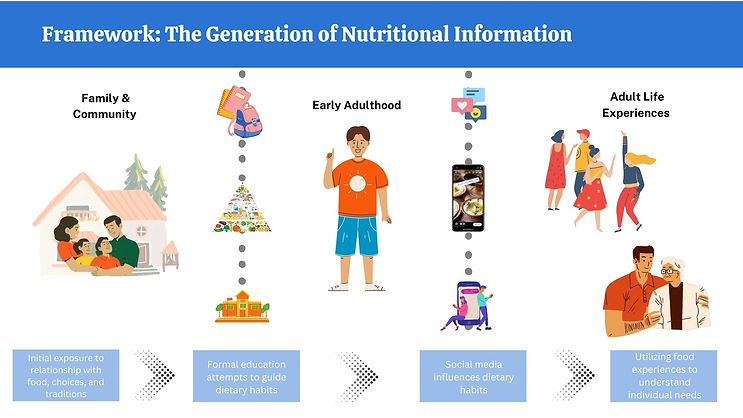
Our findings led us to produce a framework that reflects the generation of nutritional information during an individual's life.
The framework showcases the problem statement:
PROBLEM
People’s perceptions of what foods are nutritious are constantly changing based on the information that is being presented to them at different stages in their lives.
The Outcome
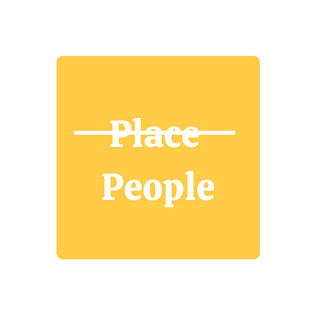
Insights:
01. People over Place, It's More Than The Grocery Store
What mattered most were the human interactions and elements that came in tangent with food. Even when stores were discussed, what was highlighted were the human aspects to the store.
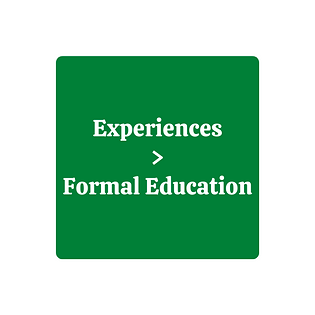

"When I think of having a meal, [it's about] being able to sit down, talk to someone, enjoy the food that we are eating; food is a big central component of family gatherings.”
02. Nutrition Is Not A One Size Fits All
People's eating habits are influenced by others. However, everyone is unique when it comes to what foods work with their bodies and trying to figure out what works for them was a struggle.
“Everyone wants to tell you how their way of eating is the best way of eating…in [actuality], accepting that this is the kind of food I like, that feels good for me.”
03. Experiences Have A Greater Impact Over Formal Education
Emphasis on learning through experiences more than any formal setting, where people brought up how they were raised when talking about food. Community, Nostalgia, and familiarity trumped formal education in all conversations.
“Right now I am cooking all my meals. I was raised to think homemade foods are healthier and better.”

Opportunities for Service Design
1
People
How might we incorporate a more human element to formal nutrition education?
2
Individualization
How might we promote people to curate food consumption that works for their bodies ?
3
Experiences
How might we leverage nostalgia so that teaching opportunities are more long-lasting?
Service Design Process
Ideation
Competitive Analysis
Prototyping
Future Directions
Fishbone & Concentric circle diagrams were a chance for our team to individually reflect on the project direction to then come together to create a unified plan.
-
The fishbone diagram illustrates the potential causes people lack filters to process nutritional information for themselves.
-
Concentric circles diagrams is focused on fostering healthy and fulfilling intentional eating.
Competitive Analysis
We completed an analysis of services that are in operation related to food and nutrition. With this, we gained insight on what current companies are doing within the field and gain inspiration from organizations on methodologies of completing service.
The diagrams below depict the competitive analysis research process:

Visual representation of competitive analysis opportunity areas within and across services
Prototyping Plan
The final prototyping plan was developed using the feedback received for the concept development. Select the embedded google document below to view the updated prototyping plan.
Prototyping in Progress...
1
Prototype session: Augmented Reality Assistant
Our team walked around the grocery store with each participant and presented sticky notes that depicted nutritional information or other prompts related to the items that were being considered.

2
Prototype session: Incentivized Family Cooking Class
We were able to work with participants who have children to get their perspectives on this family-centric concept. Presented cards with options for the activity and informational sessions of the class.

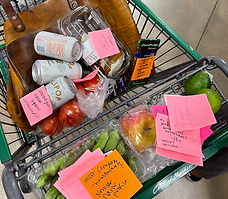
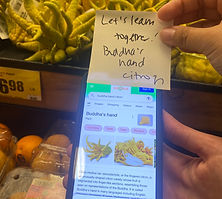
Prototyping ideation session, coming up with options for the cooking class and a journey map. This phase will be a time for our testers to select the content of the class sessions and the structure of how the class sessions will run. This was done to test the core operations of the service.


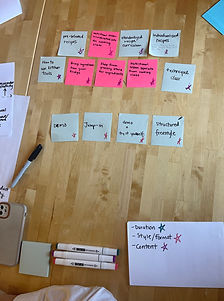
SWOT Analysis
After prototyping two concepts, we felt both held merit and found that our participants engaged completely with both. To move forward we completed a SWOT (Strengths, Weakness, Opportunities, Threats) analysis of both concepts to compare and contrast them.

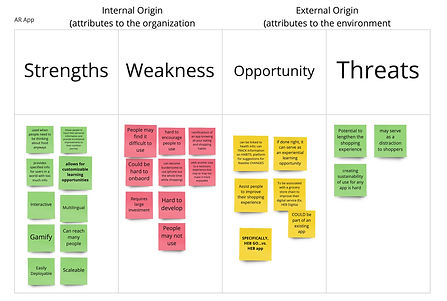
Introducing . . .

What is Eatwell?
It is a Digital AR service hosted within the existing nutrition feature on mobile phones + phone apps. We wanted this to be integrated into pre-existing phone ecosystems. Both Android and Apple's IOS.
How it Works:
The service uses your smart phone camera and deep learning (Food Recognition + Food Logging) in collaboration with the user's health information provided within the Health app to create customizable suggestions in real time at the grocery store.

Service Visualization
Wireframes and Mockups
To go along with our service visualization, our team chose to develop the interface that users would interact with in order to benefit from the service, i.e. the application design itself.
Initial Iterations . . .


Final Prototype . . .


Here is a sequence of screens that a user would encounter upon opening their phone’s Health: Nutrition feature. Starting an option for what kind of profile to develop, then a personalized dashboard. The last two screens show how the augmented reality portion of the application would look like for a user who chooses to open their camera and gain information on food item.
Why are these features important?
Basic vs Advanced
Monitoring
Information
Suggestions
The need for personalization was a prevalent insight when dealing with nutrition
Integrated shopping list and nutritional goals to provide applicable suggestions
Non-distracting information was a key indicator of a successful application during prototyping
Meal options crucial to address lack of ingredient knowledge as a barrier to purchasing
Our Team.

Jewel. TA
BHSc Health Sciences

Iya. A
BA Biology

Ayesha. R
BSc Biomedical Engineering

Jesse. D
BBA Design + Management
Researcher
Researcher
Researcher
Researcher


